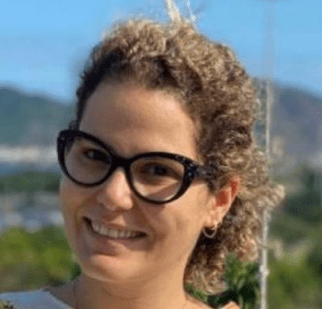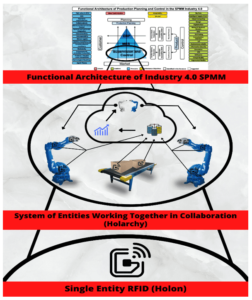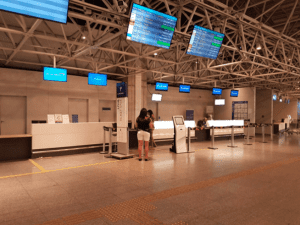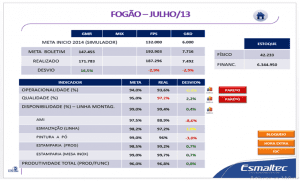ORIGINAL ARTICLE
TORQUATO, Paola Regazoni [1], ARAUJO, Fernando Oliveira de [2]
TORQUATO, Paola Regazoni. ARAUJO, Fernando Oliveira de. The Business of Business Schools. Revista Científica Multidisciplinar Núcleo do Conhecimento. Year 06, Ed. 04, Vol. 08, pp. 67-80. April 2021. ISSN: 2448-0959, Access link: https://www.nucleodoconhecimento.com.br/production-engineering/business-schools, DOI: 10.32749/nucleodoconhecimento.com.br/production-engineering/business-schools
ABSTRACT
This article seeks to compare the deliveries promised by the main Business Schools with those expected by the students, in order to improve the administrative processes in use by the Institutions. This is a systematic review of the literature, accompanied by exploratory empirical research, which describes the state of the art and the potential for innovation in relation to the management processes of business schools in relation to market expectation. Five attributes relevant to the success of business schools were identified, namely: provision of managerial learning; organizational flexibility; strategic performance measure; impact and outcome. this is an unprecedented study, at the national level, aimed at improving the management processes of the Business Schools of Rio de Janeiro. The results are limited to the case under study.
Keywords: Business School, Management Education, Executive Training.
1. INTRODUCTION
Business Schools represent spaces for training and qualification of professionals of the most different hierarchical levels, desirous of developing technical, managerial or behavioral skills. (PIMENTA and DUARTE, 2007). They seek to differentiate themselves by offering programs segmented by different criteria, such as the form and intensity of their realization; duration; place of realization; flexibility for the participant…
It is expected that the Business Schools are inserted in a competitive environment, intend to offer educational and training services in order to contribute to the materialization of the objectives of the contracting companies and their employees. And in this context, this research seeks to compare the relationships between client expectations (students and graduates) with the promises made by the institutions investigated in Rio de Janeiro. It happens that among the promises and expectations of the different groups of actors involved (teachers, coordinators, students, graduates and managers), gaps in the effectiveness of the services offered can be observed. In this sense, this research aims to compare the expectations of clients with the promises of educational institutions.
1.1 GENERAL OBJECTIVE
The objective of this work is to identify what business schools in the State of Rio de Janeiro promise, highlighting their purposes on the perspective of their various groups of actors regarding the delivery of their services.
2.2 SPECIFIC OBJECTIVES
- Identify the expectations of customers of the Business Schools of Rio de Janeiro;
- Analyze what are the main promises of business schools in the State of Rio de Janeiro for their clients.
- Compare the promises and expectations evidenced.
3. MATERIALS AND METHODS
The research was constituted through a systematic review of the literature and empirical research. Concepts, definitions of Business Schools, as well as fundamental elements for the proposition of a model appropriate to the management of the organizations surveyed are analyzed. The bibliographic research seeks to cover the literary production that is consistent with the theme under study according to Marconi and Lakatos (2003).
3.1 SYSTEMATIC REVIEW OF THE LITERATURE
A systematic review of the literature was carried out from the Web of Science (Thomson Reuters Scientific) and Scopus (Elsevier) databases, as well as the Brazilian Digital Library of Theses and Dissertations (BDTD) of the Brazilian Institute of Information on Science and Technology (IBICT). We tried to respect the observations of good practices for systematic reviews, presented by the Center for Reviews and Dissemination (CRD, 2009), taking into account eight aspects: defining the review in terms of population, interventions, comparators, results and study designs (PICO – Population, Intervention, Comparasion and Outcome); adequacy of the search strategy; preventive measures against errors in the process of selecting sources; appropriation of criteria to evaluate the quality of primary studies, prevention against prejudices and errors in the quality assessment process; taking preventive measures to minimize errors in the data extraction process; detailing of primary studies; appropriate methods for data synthesis; assessment of the differences between studies and grouping, if it is appropriate and significant to do so; accuracy of the authors’ conclusions in relation to the evidence that is reviewed. (CRD, 2009).
In addition to good practices, we consider the indications of Sampaio and Mancini (2007), for whom scientific research requires, in addition to systematic review, relevant and well-formulated research questions: what are the main characteristics of business schools identified by the literature? What would be the expected contributions of business schools to the development of the business ecosystem?
The acronym PICO, used in systematic reviews in the health area, adapted for the bibliographic review of this research, uses strings (descriptors) to identify the population of objects of interest, according to the combinations appropriate to the theme. After the choice, the descriptors were applied to the Web of Science and Scopus search bases by searching journals with articles indexed in English, Portuguese and Spanish, associated by logical connectors E (AND), OU (OR), according to the relevance of the descriptor in use. The search key generated the following string:
(Business schools OR business college OR managements schools OR managements institutes) AND (Consulting OR executive training OR management development OR complementary training OR management certification) AND (Organizational development OR capacity building OR organizational intelligence OR managerial development))
A bibliographic survey was carried out in the databases, plus the filters related to the types of scientific production (article and review) and the languages of interest (English, Portuguese and Spanish) between 10 and 20 July 2019.
As an additional source of information on the research theme, local academic productions available at the Brazilian Digital Library of Theses and Dissertations (BDTD) on July 24, 2019 were consulted. Table 1 details the sets of studies found in the initial phase of searches.
TABLE 1 – productions consulted.
| Bases | ||||
| kind | Scopus | Web. of Sc. | BDTD | total |
| Articles | 243 | 155 | 398 | |
| Reviews | 28 | 10 | 38 | |
| Theses | 12 | 12 | ||
| Dissertations | 18 | 18 | ||
Source: TORQUATO and ARAUJO (2020).
After reading the titles and abstracts, the papers were submitted to screening by criterion of adherence to the theme, leaving for revision 27 texts, systematized in Chart 2:
TABLE 2 – productions selected for review.
| Bases | ||||
| kind | Scopus | Web. of Sc. | BDTD | total |
| Articles | 5 | 14 | 19 | |
| Reviews | 28 | 10 | 38 | |
| Theses | 2 | 2 | ||
| Dissertations | 5 | 5 | ||
Source: TORQUATO and ARAUJO (2020).
The selected papers were fully read and critically analyzed. To support the search for adherent attributes in the selected works, VOSViewer software was used. Figure 1 exemplifies the process of identifying concepts and attributes observed in Business Schools, highlighting: provision of managerial learning; organizational flexibility; strategic performance measure; impact and outcome.
FIGURE 1 – identification of the attributes presented in the titles of the references.
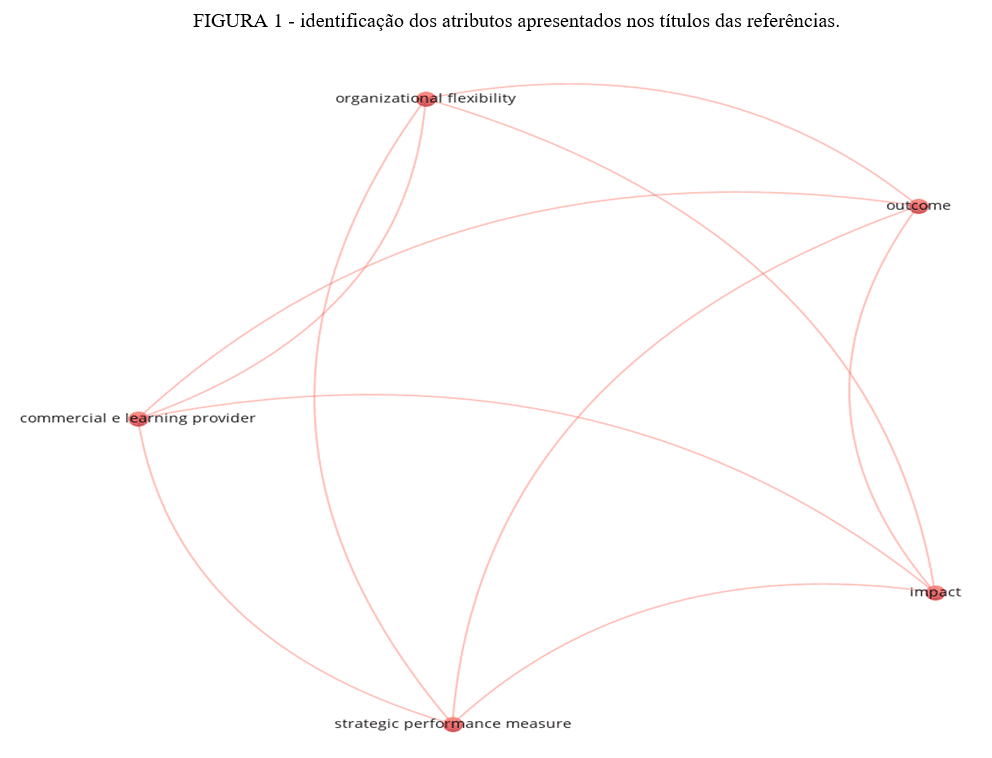
In the semantic analysis the titles and summaries of the English references were saved to a file in the .txt format and , from the link “create” of the application, selected the following options: “Create a map based on text data” >> “Read data from VOSviewer files” >> Selection of the txt >> “Binary counting” >> “1” >> “30” >> “Finish”.
Seven theoretical characteristics were grouped and highlighted, i.e.: to publish research; create competitive advantages; value proposition; corporate identity; career success; form skilled labor and hybridization/diversification. These categories have a greater impact on the analyzed texts, because they appear more recurrent and, therefore, are used to guide the search for answers to research problems in the empirical phase.
Trkman (2019) identifies 4 stakeholder groups for business ecosystems in Business Schools: students, teachers, universities and society. These groups are associated with the five attributes identified in the titles of the references and the seven most representative categories, classified from the critical analysis of the literature.
From the identified categories it was possible to characterize the Business Schools as institutions that are providers of management learning, which seek to promote an impact on society to create competitive advantages through corporate identity, achieved by the search for improvement in the classifications of strategic impact measures, composed of publications of scientific research, hybridism and diversification of activities.
3.2 EMPIRICAL STUDY
The research typology started from the reading of Marconi and Lakatos (2003); Gil (2002); Gray (2012); Prodanov and Freitas (2013), which allow classifying this as a mixed field research, of an applied and descriptive nature in relation to research objects, i.e.: Business Schools of Rio de Janeiro. It is, therefore, a restricted universe of known actors, which makes it possible to describe the research objects, abstaining from the sampling process. Tables 3 and 4 present the characteristics of objects and research subjects:
TABLE 3 – characterization of Business Schools, research objects.
| Object | Features |
| School A | It is the most traditional Business School in Brazil, working for 70 years, with academic production comparable to state-of-the-art institutions at the global level. Its actions are focused on strategic areas of Brazilian life, specifically public administration, economics, history and law. |
| School B | It is a private institution, specializing in teaching and research in the areas of Business and Economics. It was founded in the 1970s.It offers undergraduate and graduate courses in Business, Economics, Law, International Relations, Accounting. The MBA was started in 1980. The Business School produces research, consulting and other services. It is part of the Brazilian operations of an American multinational. |
| School C | Advanced research center linked to a Federal University, structured in the 1990s, which aims to: disseminate knowledge; promote university extension; specialization at the graduate level; foster research; technological, economic and social changes. |
Source: TORQUATO and ARAUJO (2020).
TABLE 4 – characterization of groups of actors, research subjects.
| Characterization of research subjects | ||
| groups | Features | Sources |
| Students | Actors interested in showing results in the job market through career success. They are required to publish research and aim for certification. | Acharya, S. (2019); Trkman (2019)
Guimarães (2002); Cabral-Cardoso, C. (2004); Orozco, L.A. and Villaveces, J.L. (2015); Seoane (2016) |
| teachers | They aim to create competitive advantages for other actors, are characterized by organizational flexibility and the proposition of values (intellectual, ethical, economic…). They are requested to publish and promote strategic research, in addition to adapting to hybridization and diversification of activities. | Dell’era, C. (2010) ; Loyola (2015); Seoane (2016); Vakkayil, J., Chatterjee, D. (2017) Muff, K. (2017) Passarelli, A.M.; Boyatzis, R.E.and Wei, H.G. (2018); Guimarães (2002); Alajoutsijarvi, K; Juusola, K. and Siltaoja, M. (2015); Trkman (2019) |
| (MANAGERS/COORDINATORS) | They identify themselves as providers of management learning and aim to promote the impact of corporate identity through incentives to publish research and improve the international ranking. They are asked to increase competitiveness, generate value for society, promote hybridization and diversification of activities. | Guimarães (2002); Cabral-Cardoso, C. (2004); Trkman (2019); Alajoutsijarvi, K; Juusola, K. and Siltaoja, M. (2015); Massaro, M.; Dumay, J. and Bagnoli, C. (2015); Money, K., Saraeva, A., Garnelo-Gomez, I., Pain, S., Hillenbrand, C. (2017); Martin, G; Siebert, S. and Robson, I. (2018) |
| Graduates | Promotes strategic performance measures through the appreciation or depreciation of the corporate identity of business schools in their networking. They make up the skilled workforce that represents institutions in the labour market. | Loyola (2015); Passarelli, A.M.; Boyatzis, R.E. and Wei, H.G. (2018); Guimarães (2002); Seoane (2016); Passarelli, A.M.; Boyatzis, R.E. and Wei, H.G. (2018) |
Source: adapted from Trkman (2019).
The research subjects were selected by criterion of convenience and availability to meet the demands of the research. The questionnaire, a data collection instrument, was elaborated based on the theoretical basis verified by the systematic review of the literature, as well as the objectives and profile of the research subjects.
After an initial contact with the candidates, in October 2019, those who fit the profile of interest for the research and agree to answer the questionnaire, received the test form. The use of pre-test for the definition of questionnaires is a procedure indicated by Marconi and Lakatos (2003). This feature allows you to identify failures in them. Nine research subjects participated in the test phase of the questionnaire, between 10/18 and 06/11/2019, 3 graduates, 2 managers, 2 coordinators and 2 students from Business Schools in Rio de Janeiro.
The objective questions were validated by face evaluation, the compiled data were submitted to cronbach’s Alpha test, which deals with the most widely used reliability measure today (HAIR et al., 2009). The index ranges from 0 to 1, with a lower limit of 0.6 and is obtained from the canonical formula, presenting a value of 0.89, with repetition for the total set of 0.872, a factor that confers “high” reliability to the collection instrument.
This research concatenates two methods, quantitative and qualitative, in order to promote convergence and/or divergence between the answers that relate to the variables of interest, from the comparison between the answers already formulated by the authors presented in the systematic review of the literature and those presented by the research subjects. This comparison allows, according to Tuzzo and Braga (2016), the integration between the various possible perspectives in relation to the phenomenon in this regard.
3.3 LIMITATIONS OF THE METHOD
The methods applied are limited, according to Gray (2012), because they allow bias on the part of the research subjects, the interpretation of the researcher and memory lapses of the respondents. Other negative influences for the constitution of the data are the presence of errors of completion, omissions and difficulties in interpreting the questions.
To quantify the universe of interest, we sought, in documentary research, the data necessary for the measurement of a probabilistic sample. It was found, however, from field research, that the data available in business schools are quite compartmentalized and that some responsible for the dissemination of them are not able to collaborate with the research, so that it was not possible to obtain reliable numbers as to the size of the population of interest, so little select the research subjects at random. Such limitations caused this investigation to use a convenience sample, that is, non-probabilistic, according to Gray (2012). The non-probabilistic characteristic of the data presented here limits the generalization of the results, so that the considerations expressed should be observed only in relation to the group described.
4. ANALYSIS AND DISCUSSION OF RESULTS
The actors consulted are divided into five sets: managers, coordinators, teachers, graduates and students from the Business Schools surveyed. During data collection, 146 research subjects collaborated, 28 managers, 14 coordinators, 37 teachers, 37 graduates and 30 students. The collection comprised the period from December 2019 to March 2020, with several visits to business schools and mobilization of networks of interest between institutions. The extract is composed of respondents with ages ranging from 19 to 77 years, complete in 2020.
It was possible to identify three attributes and 18 relevant elements to indicate the values promised by the institutions and expected by the clients from the perspective of the groups of actors involved. In order to measure respondents’ expectations, the question is “What benefits do students expect to receive from Business Schools?”. The answer can range from 1 (small expectation) to 5 (great expectation). Following they are asked “What benefits does the Business School promise to deliver to its students?”
The cross-comparative analysis showed that, for the complete group of 146 respondents, there is no consensus among the benefits expected by the students of the EN. However, there are low expectations expressed by respondents regarding the students’ search for “certification”. With the exception of the managers consulted, the other groups of actors consider that this is the least expected value by the clients of the Business Schools.
It was also evidenced that, among the subjects consulted, there is no consensus on the main benefit promised by EN to their clients. Students, graduates and managers agree, however, that career advancement and increased competitiveness are not among the values most promised by institutions.
The main conflicts between expectations and promises occur, in the perception of respondents, regarding the benefits of career advancement, long awaited among students and little promised by the EN. Conversely, “certification” is perceived by research subjects as a much-promised benefit and little expected by students.
5. FINAL CONSIDERATIONS
The systematic review of the literature allowed the concatenate the main characteristics of the Business Schools, defining them as institutions that are providers of managerial learning, which seek to promote impact in society to create competitive advantages through corporate identity, achieved by the search for improvement in the classifications of strategic impact measures, composed of publications of scientific research, hybridism and diversification of activities.
Empirical research showed that the value less expected by clients of The Business Schools of Rio de Janeiro, and also the most promised by institutions, is certification, while career advancement and competitiveness gain are, conversely, values not promised and much desired by students and graduates of EN.
REFERENCES
ACHARYA, S. Beyond Learning Outcomes: Impact of Organizational Flexibility on Strategic Performance Measures of Commercial E-Learning Providers. Global Journal of Flexible Systems Management, v. 20 (1) p. 31-41, 2019.
ALAJOUTSIJARVI, K; JUUSOLA, K. e SILTAOJA, M. The Legitimacy Paradox of Business Schools: Losing by Gaining? Academy of Management Learning & Education, v. 14 ed. 2, p. 277-29, 2015.
CABRAL-CARDOSO, C. Ethical misconduct in the business school: A case of plagiarism that turned bitter. Journal of Business Ethics 49 ed. 1, p. 75-89, jan. 2004 .
CRD – CENTRE FOR REVIEWS AND DISSEMINATION. CRD’s guidance for undertaking reviews in health care. York/ England: University of York, 2009.
DELL’ERA, C. Art for Business: Creating Competitive Advantage through Cultural Projects. Industry and Innovation, v. 17 ed. 1, p. 71-89, 2010.
GIL, A. C. Como Elaborar Projetos de Pesquisa. 4. ed. São Paulo: Atlas, 2002. 175 p.
GUIMARÃES, Liliane de Oliveira. A experiência universitária norte-americana na formação de empreendedores: contribuições das universidades de Saint Louis, Indiana e Babson College. 2002. 316 f. Tese (Doutorado) – Curso de Administração, Eaesp, Fundação Getulio Vargas, São Paulo, 2002.
GRAY, D. E. Pesquisa no mundo real. 2. ed. Porto Alegre: Penso, 2012. 488 p.
HAIR, J.F. Jr. et al. Análise Multivariada de Dados. 6 ed. Porto Alegre: Bookman. 2009. Trad. Adonai Schlup Sant’Anna e Anselmo Chaves Neto.
LOYOLA, Marília Vargas. O impacto do curso de pós-graduação em administração de empresas – Pós ADM- da Fundação Getulio Vargas na carreira dos seus egressos. Dissertação (mestrado) – FGV EBAPE – Escola Brasileira de Administração Pública e de Empresas. 93fl. Orientadora: Fátima Bayma de Oliveira, Rio de Janeiro, 2015.
MARCONI, Marina de Andrade e LAKATOS, Eva Maria. Fundamentos de Metodologia Científica. 5. ed. São Paulo: Atlas, 2003.
MARTIN, G; SIEBERT, S. e ROBSON, I. Conformist innovation: an institutional logics perspective on how HR executives construct business school reputations. International Journal of Human Resource Management, v. 29 ed. 13 , p. 2027-2053, 2018.
MASSARO, M.; DUMAY, J. e BAGNOLI, C. Where there is a will there is a way IC, strategic intent, diversification and firm performance. Journal of Intellectual Capital , v. 16 ed. 3 , p. 490-517, 2015.
MONEY, K., SARAEVA, A., GARNELO-GOMEZ, I., PAIN, S., HILLENBRAND, C. Corporate Reputation Past and Future: A Review and Integration of Existing Literature and a Framework for Future Research. Corporate Reputation Review, v. 20 (3-4), p. 193-211, 2017.
MUFF, K. How the Circle Model can purpose-orient entrepreneurial universities and business schools to truly serve society. Journal of Management Development, v. 36 ed. 2 edição especial: si, p. 146-162, 2017.
OROZCO, L.A. e VILLAVECES, J.L. Heterogeneous research networks in Latin American schools of business management. Academia-revista Latinoamericana de Administracion , v. 28 ed. 1 , p. 115-134, 2015.
PASSARELLI, A.M.; BOYATZIS, R.E. e WEI, H.G. Assessing Leader Development: Lessons From a Historical Review of MBA Outcomes. Journal of Management Education , v. 42 ed. 1 , p. 55-79, fev. 2018.
PIMENTA, R. D. e DUARTE, R. G. O Processo de Internacionalização de Escolas de Negócio: o Caso da Fundação Dom Cabral. In: ENANPAD, 31., 2007, RJ. Anais. Rio De Janeiro: Anpad, 2007. p. 11 – 20.
PRODANOV, C. C.; FREITAS, E. C. Metodologia do Trabalho Científico: Métodos e Técnicas da Pesquisa e do Trabalho Acadêmico. 2. ed. Novo Hamburgo: Feevale, 2013. 276 p.
SAMPAIO, R. F. e MANCINI, M.C. Estudos de revisão sistemática: um guia para síntese criteriosa da evidência científica. Rev. bras. fisioter., São Carlos, v. 11, n. 1, p. 83-89, jan./fev. 2007.
SEOANE, R. V. R. M. Criação de valor em cursos de MBA na percepção de seus alunos: quais os desafios das Escolas de Negócio? 61 f. Dissertação (mestrado) – Escola Brasileira de Administração Pública e de Empresas, Centro de Formação Acadêmica e Pesquisa. 2015.
TRKMAN, P. Value proposition of business schools: More than meets the eye. The International Journal Of Management Education, [s.l.], v. 17, n. 3, p.100310-100321, nov. 2019.
TUZZO, S. A.; BRAGA, C. F. O Processo de Triangulação da Pesquisa Qualitativa: O Metafenômeno como Gênese. Revista Pesquisa Qualitativa, São Paulo, v. 4, n. 5, p. 140-158, 2016.
VAKKAYIL, J., CHATTERJEE, D. Globalization routes: The pursuit of conformity and distinctiveness by top business schools in India. Management Learning, v. 48 (3), p. 328-344, 2017.
[1] Master in sustainable management systems, specialist in business management, graduated in law.
[2] Post-Doctorate in Production and Transport Engineering from UFRGS – Federal University of Rio Grande do Sul. PhD in Production Engineering from PUC-Rio – Pontifical Catholic University of Rio de Janeiro. Master in Management Systems and Production Engineer from UFF – Fluminense Federal University
Submitted: March, 2021
Approved: April, 2021.
